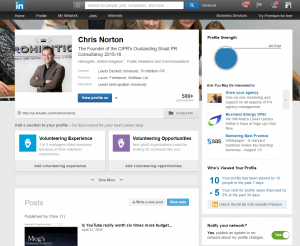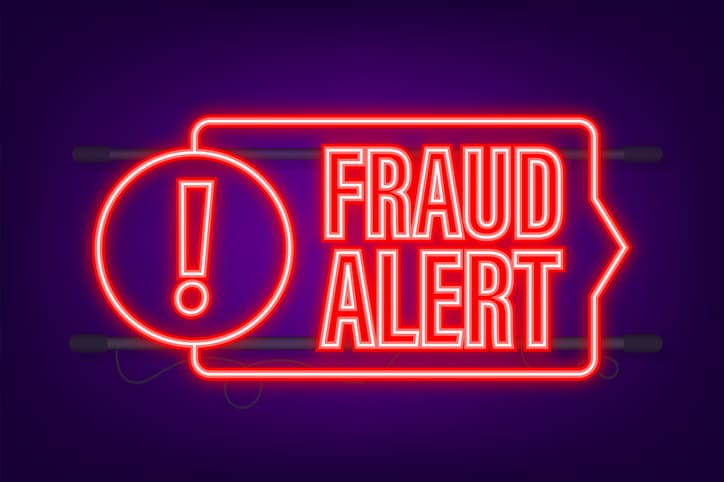The world’s defacto professional B2B social network LinkedIn has changed the landscape of business networking, and with the recent buyout by Microsoft, is only likely to grow in influence and be added more and more to our daily life.
I am going to be honest here and say I like some of LinkedIn and I hate other aspects of it. I think Microsoft could really help make the platform better by spending a bit of time on reducing the spammy nature of it. That said, those who are not using the platform for their business relationships are likely missing out on opportunity to do business. Yet being active on the platform is only half the battle. Much like the traditional CV, there are a huge array of errors that can instantly scare off prospective employers like myself – I warn you, I do use them in my lectures at University. Here are 15 major errors to avoid when using LinkedIn.
- Tell YOUR story, don’t lie
Recruiters will often see right through any lies or embellishments. It’s best to tell your own story accurately. If you’re a graduate looking for your first break, say it. You’re not going to be head hunted for the CEO of Apple because you claim you’re an experienced executive leader if you’re quite clearly not. Tell the truth, chances are there will be a suitor for your current situation. I myself have picked people up for interview in this manner.
- A stagnate profile
Your Linked in profile is effectively about creating your own personal brand, therefore if your profile activity is poor, that in itself sends a clear message. A fairly common mistake made is only updating your LinkedIn when in search of a new career prospect but that is obvious. Staying consistently active on your account will pay dividends when you actually need to utilise LinkedIn in the future. This does not mean you need to be positing every day, I don’t, but engaging in relevant groups, keeping up with old colleagues and giving out occasional recommendations (more on that later) will improve your profiles chances of standing out from the crowd don’t be a lurker.
- Ranting
Using Linkedin to rant and rave is never a good idea in regards to self-promotion. Nobody wants to network or potentially employ someone who can’t separate their emotions from their professionalism. This is not to say you can’t be opinionated and actually have something to say. If you feel strongly on a matter or a recent industry trend, then by all means present an argument. Just make sure you leave the expletives and emoji’s for somewhere else. If you do actually disagree with influencers it can often help to stand out but be careful here as sometimes it can backfire.
- Overuse of typical buzzwords
The ubiquitous use of buzzwords in order to draw connections to your profile can actually create the opposite effect and put people off. For example stating that you are ‘creative’ or ‘driven’ is a pretty ineffective way of describing yourself, as the rest of LinkedIn is claiming they are the same things. The proof is in the proverbial pudding, so if you’re proclaiming you’re driven, your profile needs to prove that. Talk is cheap – say something original and interesting about yourself.
- Inconsistency across platforms
There should be a strong correlation between what your LinkedIn profile is saying and what the rest of your professional social media is saying. Conflicting versions of yourself on different outlets make your personal brand unclear. Your CV, LinkedIn, Website or blog should all form a cohesive summary of what you’re about. I check all of these for a new employee and if I do you can be damn sure other employers do too.
- Zero recommendations
A profile lacking in any recommendations rings massive alarm bells for me. These are what gives your profile credibility, and it’s essential to try and get as many as possible. Don’t go completely overboard but if you have some good people that are connected to you – hopefully they would be happy to recommend you too. The best way to start receiving recommendations is to write your own for other people – be nice you will find it comes right back. Such gestures are appreciated and the favour is likely to be reciprocated.
- Irrelevant posts
LinkedIn is a niche platform, used fundamentally for professional activity, therefore posting a picture of your dog or cat isn’t exactly appropriate. Keep your activity based on professional subject matter. This isn’t Twitter, Facebook or Pinterest.
- The infamous profile view notification…
Many newcomers to LinkedIn are unaware that another user receives a notification when you view their profile. This is worth bearing in mind when you’re browsing people. Continuous viewing of an individual’s profile with no attempt at connecting might seem a little strange. Notifications can be turned off, however you lose the ability to see your own viewers, which can be a very valuable function.
- Spelling/Grammar mistakes
This needs little explanation. Spelling errors on a CV have long been seen as disastrous, and if we apply the same logic to a LinkedIn profile which can be altered easily at any time, such errors come across as lazy and unprofessional. Try to avoid them at all costs where possible.
- Immediately pitching to connections
Diving in to promote your business as soon as you have been accepted by someone can be off putting. This is a personal pet peeve of mine, if I agree to connect to you – don’t pitch to me your recruitment services straight away. Learn some more about the connection and lay the groundwork for your pitch or query rather than explicitly approaching them straight away like a spam account. This is one of the biggest issues on LinkedIn bad networking techniques. 
- Reliance on someone else for your profile
Some people apparently seek out others to manage their LinkedIn profiles – this is something I advise against. Whilst this is sure to have its benefits somewhere, it is advisable to learn how to do this efficiently for yourself. LinkedIn profiles are supposed to be continuously updated, a living personal profile, and this will come across most authentic if it’s coming directly from you. Also what happens if they share something that you don’t agree with? It jars with me and will with your connections if you are not careful.
- No picture/poor picture
Going to the effort to create a LinkedIn profile and not adding a picture of yourself is counterproductive. Almost just as bad is a non-professional image- a picture of you clubbing isn’t going to look great. This is one of the first points in my lectures where I see my students scrabbling for their phones to amend their shot. Find a standard professional looking image to use on your profile, and if you don’t have one, take one. This is a professional network – so get a professional shot.
- Waffle summaries
Summaries essentially should be short and focused, readers should be able to identify a clear message within a few short sentences, keep it short and snappy.
- Generic invitations
Sending off invitations with the default LinkedIn message gives no idea of why you want to connect or even who you are. People won’t always remember you from an event or meeting, so make sure you provide details in your invite and add a personal touch. It will pay off.
- No headline
The professional headline function is essential to not only use, but perfect. It is the first thing other users will see alongside your picture and it’s absolutely essential you have one. Your occupation and what opportunities you’re seeking will suffice, and instantly let people know your background.
Finally, and I know this is more than 15 points, when you are congratulating someone on a new job or a work anniversary, please don’t use the standard text that comes up automatically. I was on holiday recently, and I came back to 46 congratulations on my work anniversary and 42 of them were all exactly the same. I felt the love from my connections but unfortunately it lost its appeal by the twelfth post – try to be original and it will go a very long way.
Have I missed something? Are you aware of something that is harming people’s profiles? If so let me know in the comments.
Chris Norton is the founder of Prohibition and an award winning communications consultant with more than twenty years’ experience. He was a lecturer at Leeds Beckett University and has had a varied PR career having worked both in-house and in a number of large consultancies. He is an Integrated PR and social media blogger and writes on a wide variety of blogs across a huge amount of topics from digital marketing, social media marketing right through to technology and crisis management.


